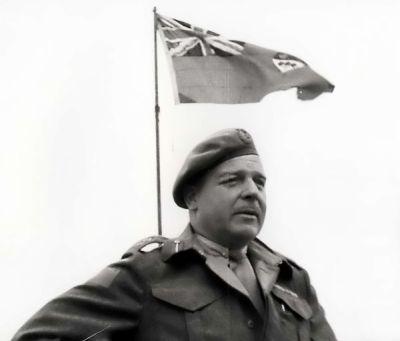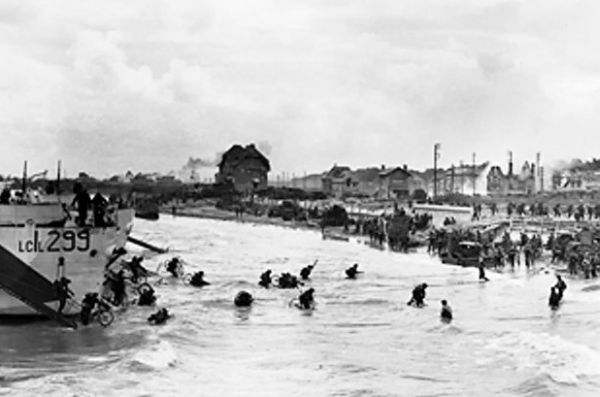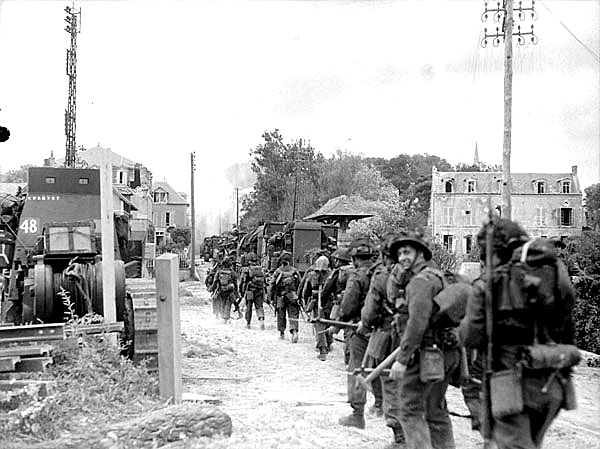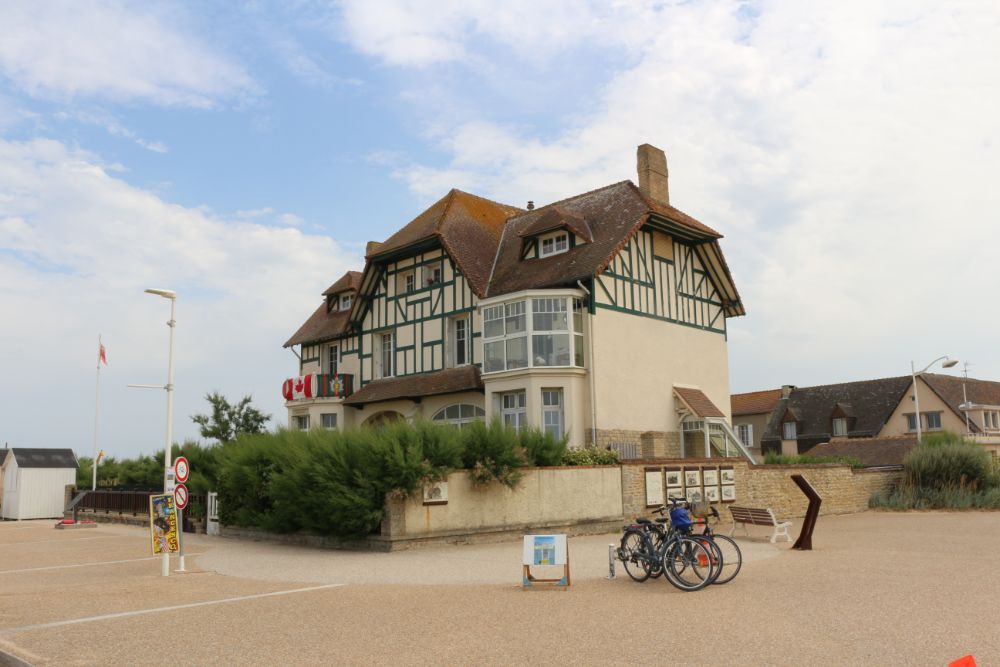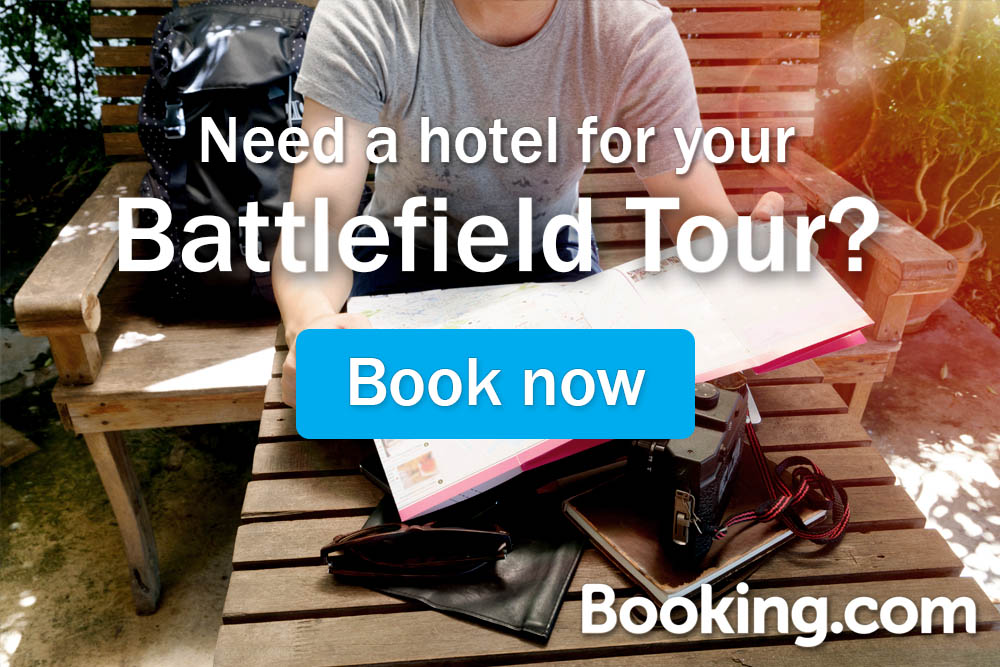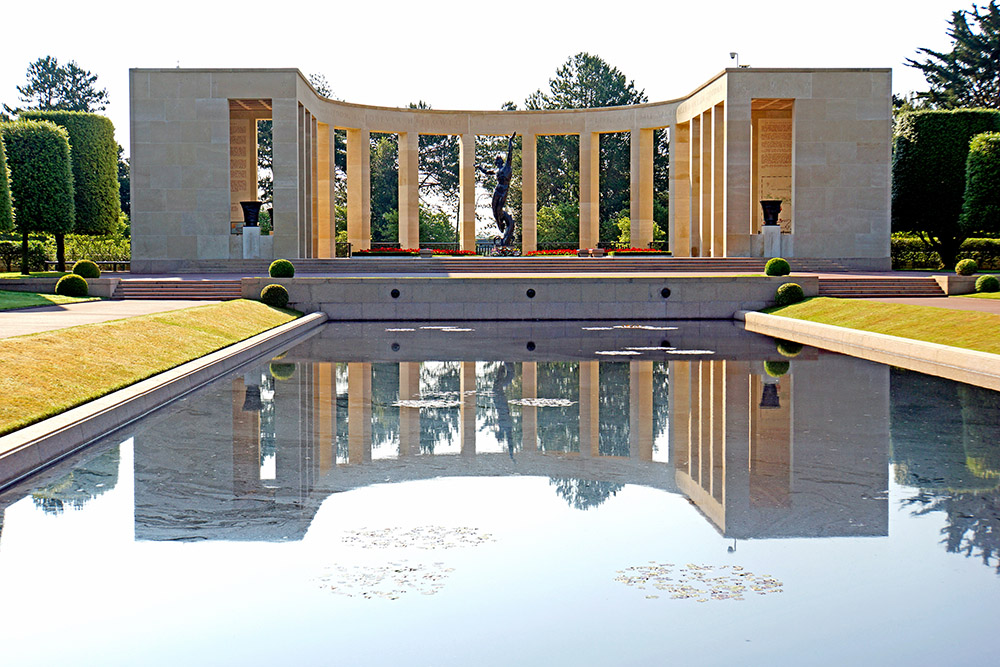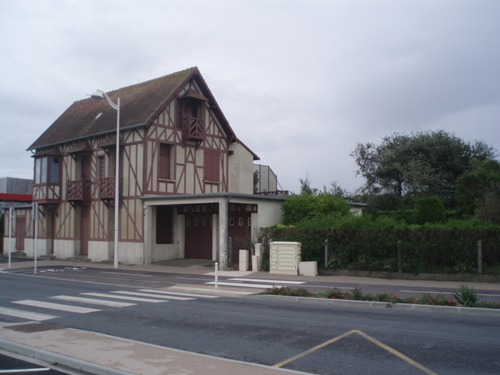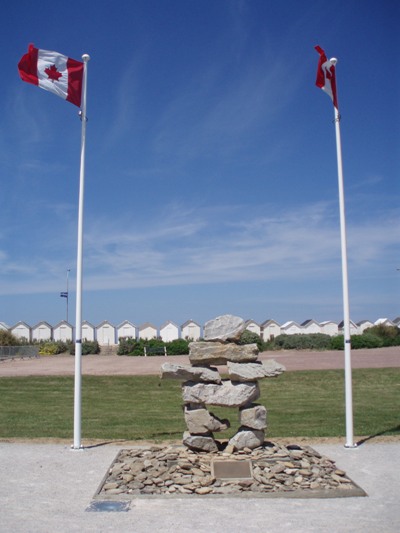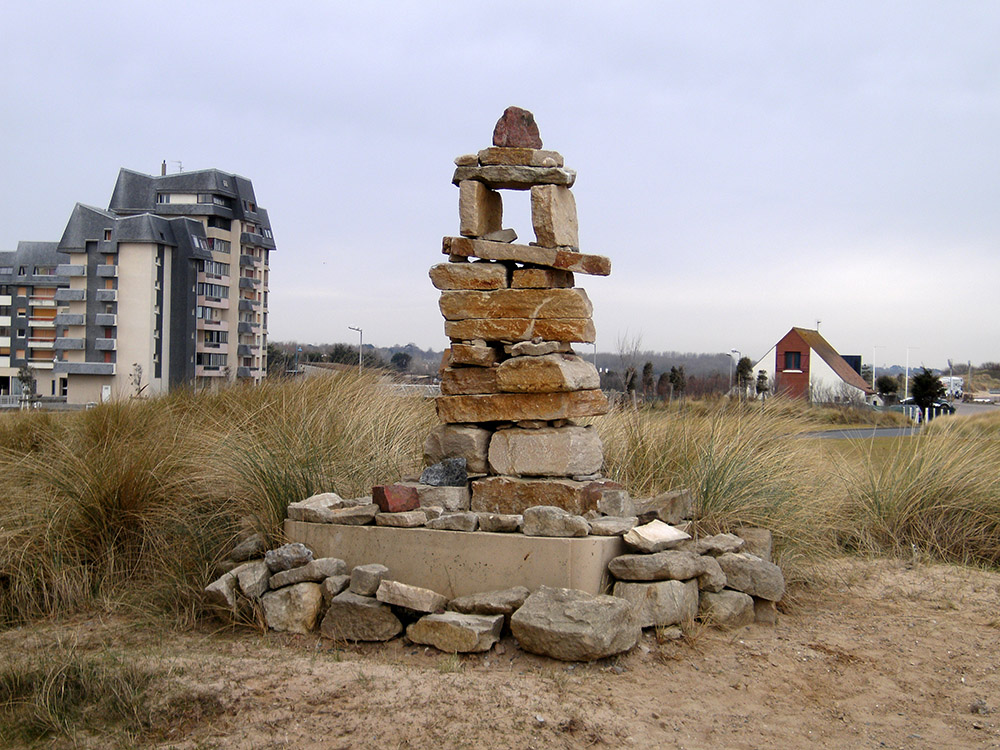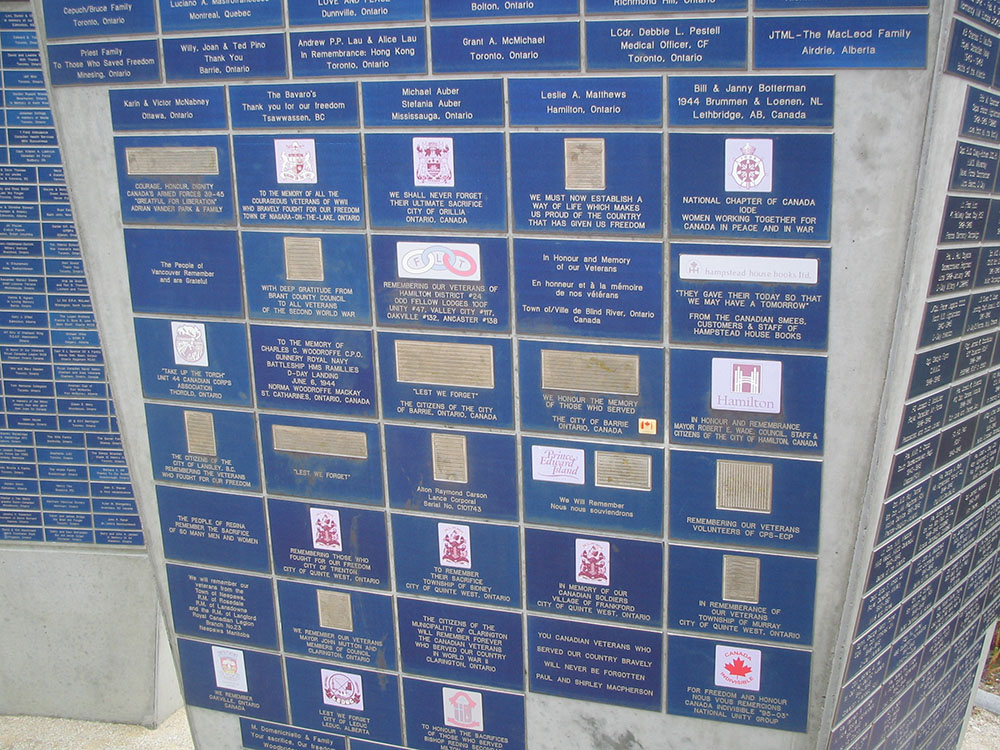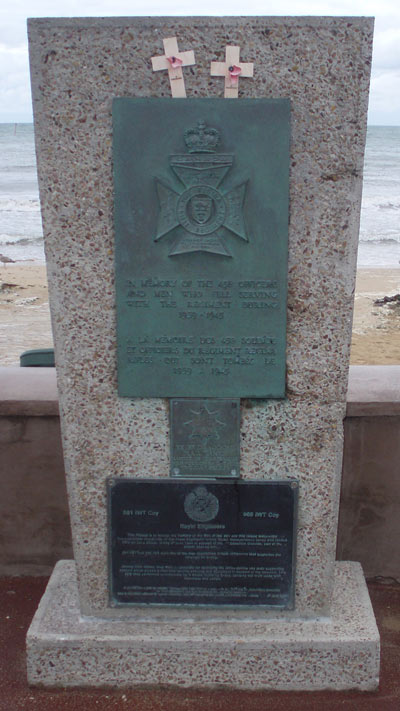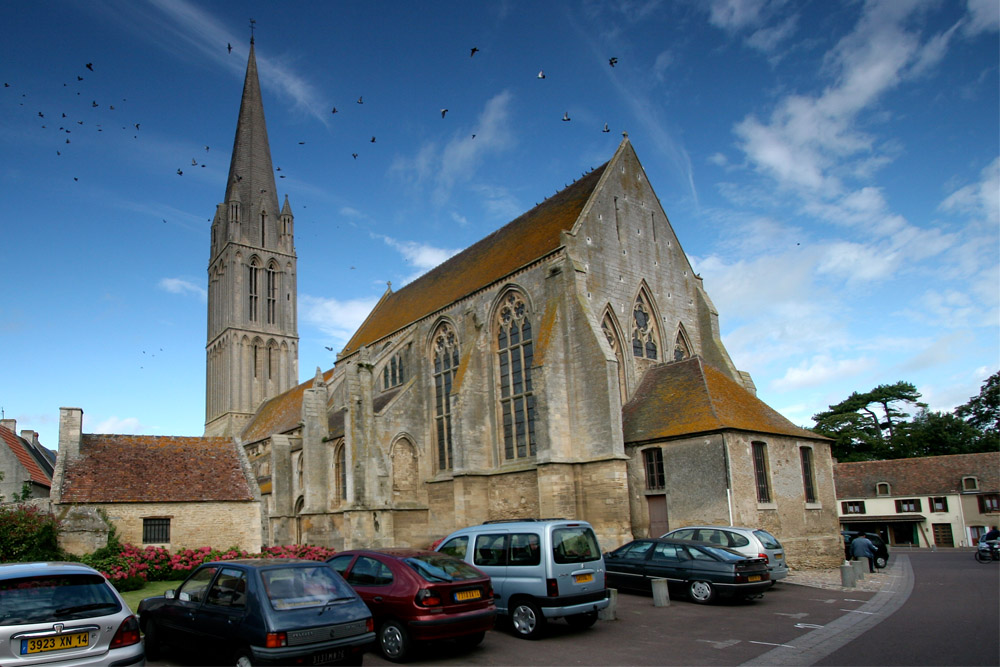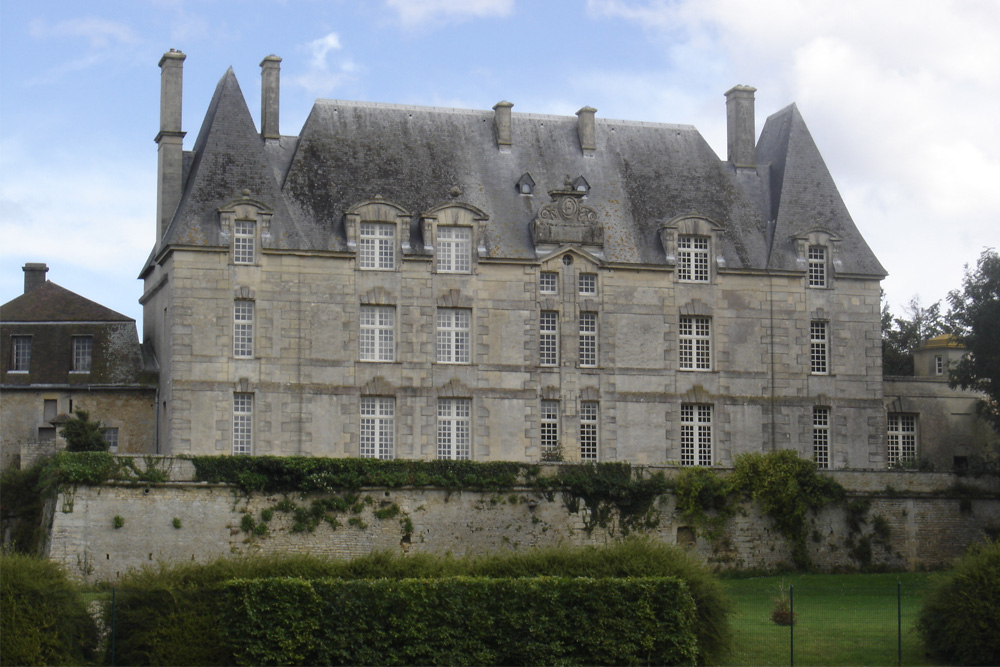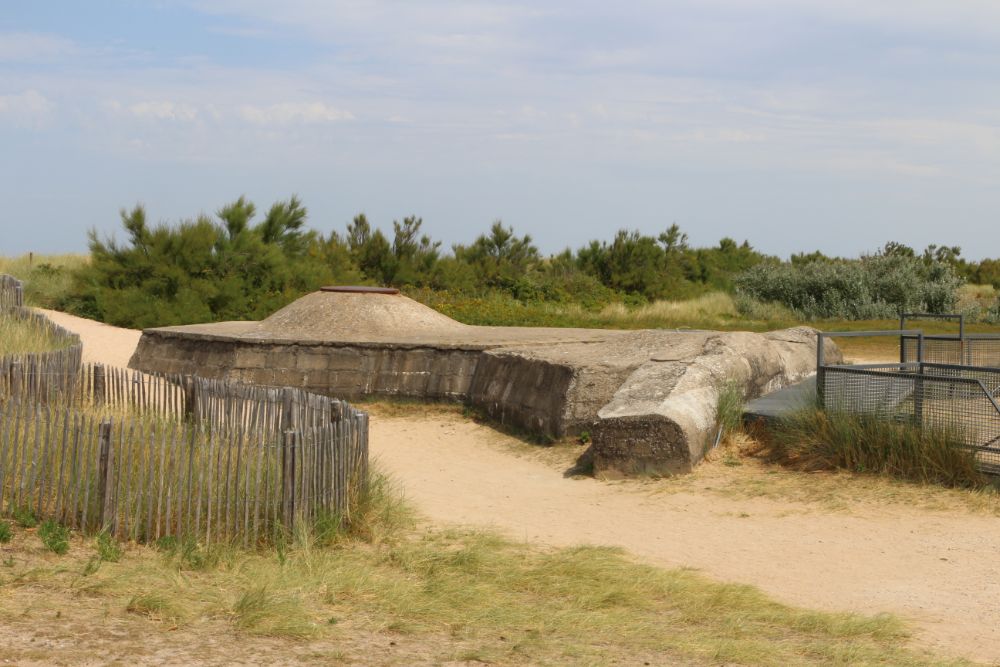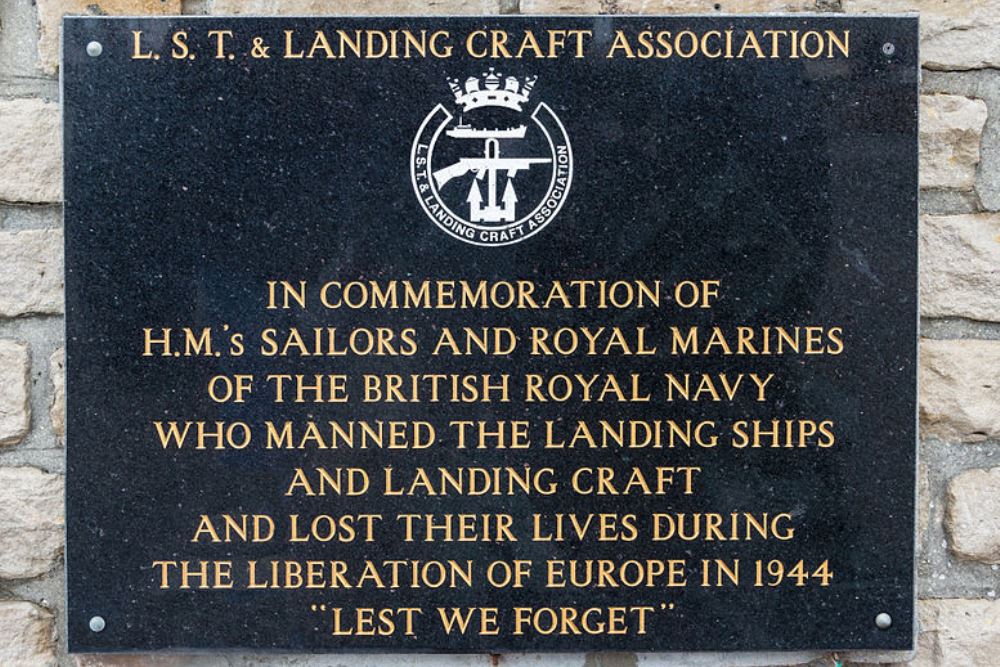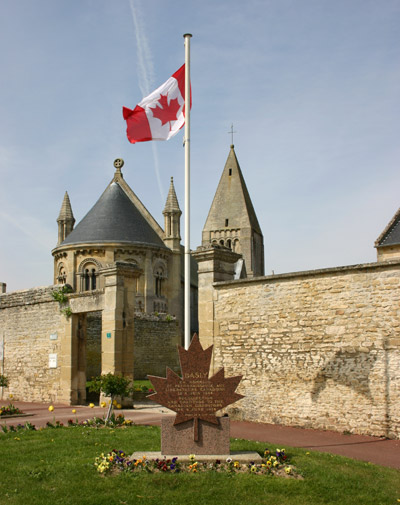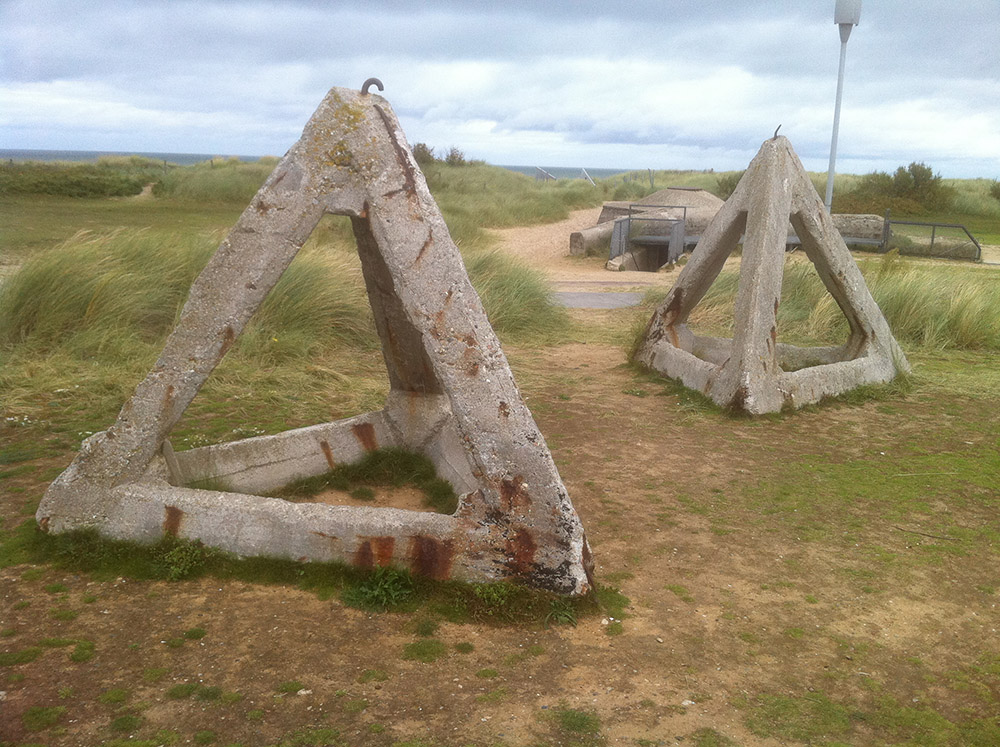Introduction
June 6, 1944 was a very important date for the liberation of Europe. On this day, the largest amphibious landing in the history of the European continent took place, Operation Overlord, when more than 130,000 British, American, and Canadian troops set foot on French soil in Normandy. Their task was to break through Hitler’s Atlantic wall. Operation Overlord claimed the lives of thousands of young men and the Third Reich never recovered. The tide definitively turned in favor of the allied forces.
Planning and defense
Juno Beach was the middlemost of the three British/Canadian invasion beaches, and was the site where the 2nd British Army began their invasion under the command of General Sir Miles Dempsey. From the vantage point of the allied forces, Juno was flanked by Gold Beach to the right and Sword Beach to the left. It covered 4.3 miles of coast line between Graye-sur-Mer and St.-Aubin-sur-Mer, and was divided in two by the mouth of Seulles river. This section of coastline was less heavily defended by the Kriegsmarine than other areas in Normandy and the Straight of Dover. The Kriegsmarine assumed that a landing on this beach would be too difficult because of the rocks and cliffs in the water. Nevertheless, barricades and defenses were set up: the engineers of the 716. Infanteriedivision planted a minefield off the coast, and the beach was covered with "Belgian Gates", Czech hedgehogs and wooden posts, many topped with mines.
The 716. Infanteriedivision, led by General Wilhelm Richter, was responsible for coastal defenses. The division consisted of around 6,700 German troops with 2,000 additional reinforcements from three Osttruppen battalions. One of the battalions manned the Widerstandneste in the Canadian sector. Nests were constructed as part of the coastal defense on either side of the mouth of the Seulles: in Courseulles, one in Bernières and one in St.-Aubin. To the west of the river, the beach was heavily defended with a field gun, two guns in casemates, four guns in Tobruks, a bunker armed with a turret from a Renault tank, and many machine gun nests and mortars. Beyond the shoreline lie an artillery regiment from the division.
Units from the notorious 21. Panzerdivision – the 192. Panzergrenadierregiment and the 200. Panzerjägerabteilung - were stationed further inland, equipped with half-tracks and self-propelled anti-tank guns. The troops – roughly 16,000 altogether – were spread out across a number of villages. On the high ground in Basly-Douvre, the Distelfunk complex was equipped with four radar stations being used by the Luftwaffe. In addition to the radar equipment, the complex consisted of 30 above ground structures. The underground bunker complex measured 29.6 acres and was defended by anti-tank guns, anti-aircraft artillery, flame throwers, machine guns and a garrison of 230 men. The RAF managed to destroy the complex’s radars prior to the D-Day landing, but the buildings were still in use as a defensive position.
The Canadian 3rd Infantry Division was assigned to land on Juno Beach. Most of the troops were descendants of British immigrants and spoke English, but the division also had French-Canadian soldiers (Le Régiment de Maisonneuve, Les Fusiliers Mont-Royal, Régiment de la Chaudière). The division’s commanding officer, General-Major Rod Keller, was actually born in the United Kingdom. It was already decided back in 1943 that the 3rd Infantry would come ashore during an amphibious landing on the coast of occupied Europe, so the division had been preparing for the mission for some time. They practiced the landing in Scotland and near Portsmouth together with the British navy and DD tanks from the Canadian 2nd Armored Brigade, which would aid them during the operation. The Canadian troops had voluntarily enlisted: even though the draft existed in Canada during the war, voluntary enlistees were the only troops sent to the front lines.
Juno Beach was divided into sectors Mike and Nan. Because it was such a large sector, Mike was further split into Green and Red, Nan and Green, White and Red. The 7th Infantry Brigade under Brigadier-General Foster would come ashore in the first sector, and the 8th Brigade under Brigadier-General Blackader would cover the other sector. The 7th Brigade consisted of the Royal Winnipeg Rifles and the Regina Rifle Regiment, the 8th Brigade, the Queen’s Own Rifles of Canada and the North Shore (New Brunswick) Regiment. Both brigades were paired with armored support from the 2nd Canadian Armoured Brigade. The British 4th Commando would follow the 8th Infantry in the Nan sector in their mission to make contact with the 41st Commando, who would be landing on Sword Beach. The Canadian 9th Brigade would come ashore in the sector with the deepest bridgehead. The brigade’s mission was to occupy the high ground to the west of Caen near the Carpiquet airfield. Like other British landing beaches, the infantry would be preceded by special armored units of the Corps Royal Engineers: on Juno Beach, the 22nd Dragons and the 5th and 6th Assault Regiments Royal Engineers were tasked with clearing the beach of obstacles and mines.
The Canadians’ goal on D-Day was to take a bridgehead and secure the coastal cities of Courcelles, St.-Aubin and Bernières. The operation to take the bridgehead was drawn up in three phases: Yew, Elm and Oak. Yew corresponded with taking the bridgehead on the beach, and Elm included crossing the Seulles and Mue rivers, taking the high ground in Anisy and Anguemy, and the Carpiquet airfield. The Oak phase was to be completed on June 6th after the Canadians reaching the railway between Caen and Bayeux, 10 miles inland.
Definitielijst
- Brigade
- Consisted mostly of two or more regiments. Could operate independently or as part of a division. Sometimes they were part of a corps instead of a division. In theory a brigade consisted of 5,000 to 7,000 men.
- D-Day
- The day of the long awaited invasion of western Europe in Normandy, France, 6 June 1944. After a long campaign of deception the allies attacked the coast of Normandy on five beaches to begin their march on Nazi Germany. Often explained as Decision Day, though this is entirely correct. The D stands for Day as generally used in military language. In this case it means an operation beginning on day D at hour H. Hence “Jour J“ in French.
- Infantry
- Foot soldiers of a given army.
- invasion
- Armed incursion.
- Kriegsmarine
- Germa navy. Part of the Wehrmacht next to Heer and Luftwaffe.
- Luftwaffe
- German air force.
- machine gun
- Machine gun, an automatic heavy quick firearm.
- radar
- English abbreviation meaning: Radio Detection And Ranging. System to detect the presence, distance, speed and direction of an object, such as ships and airplanes, using electromagnetic waves.
- RAF
- Royal Air Force. British air force
- regiment
- Part of a division. A division divided into a number of regiments. In the army traditionally the name of the major organised unit of one type of weapon.
The landings
Prior to the invasion, the landing beaches were first bombed overnight by the RAF, then by the USAAF in the early hours of June 6th. The attack by the American air force was followed by naval bombings: the fleet off shore at Juno consisted of two cruisers and eleven destroyers. Due to smoke obscuring the targets, the shelling of Juno was very inaccurate and only managed to destroy less than 15 percent of the 106 defense posts in the Juno sector. The landing was supposed to commence at 7:30, but due to rough seas, it was delayed by half an hour, which had two negative consequences for the Canadians: the rising tide covered the obstacles on the beach, and the Germans had enough time to recover from the naval bombing to prepare their weapons and man their stations.
As the landing craft approached the beach, they were hardly fired upon: the German gun emplacements along the coast were zeroed in on the beach itself. Only after the Canadians were within a few hundred yards did the Germans open fire. Shelling from further inland was focused on the vessels from the invasion fleet which were anchored off shore. Shells whizzed above the helmets of the troops in the landing craft, but they originated from their own artillery and were aimed at inland targets. Several landing craft struck obstacles en route and began to take on water, and a number of DD-tanks also succumbed to the waves.
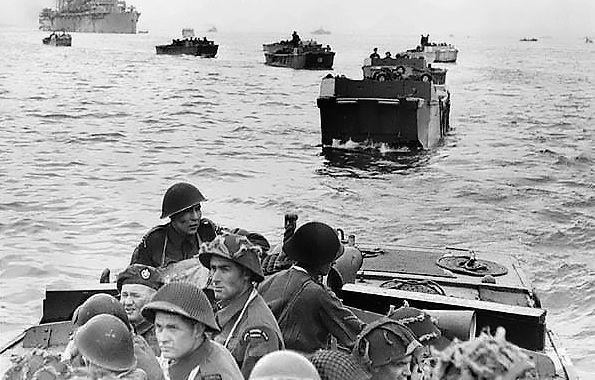
Landing craft carryi8ng men of the Winnipeg Rifles set course for Juno Beach. Source: Library and Archives Canada.
The first waves of troops were meant to arrive every 15 minutes, but the choppy waters and the myriad of obstacles in their path delayed that schedule. In some locations, the DD-tanks only reached the shore after the first infantry troops had already set foot on the beach. The tanks were supposed to clear the way for the infantry by disabling the German defenses which remained after the aerial bombing, a task the infantry could not accomplish on their own. In the Mike Red and Mike Green sectors, where the Royal Winnipeg Rifles landed, and in Nan Green, where the Regina Rifle Regiment came ashore, the tanks arrived after the infantry, which meant that the units suffered heavy losses before even reaching the beach. During the first infantry wave, half of the troops in certain units were killed, comparable to the loss of life at Omaha.
Once the tanks reached the coast, they knocked out the German defenses: with hindsight, the Canadian troops judged the support by armored weapons as being indispensable. The surviving infantry sought refuge behind the tanks and used their cover to come ashore. Similar to Omaha, the odds of surviving long enough to reach the seawall were one to two. In contrast to the Americans on Omaha, the Canadians had back up from the tanks. The destroyers off shore provided additional support, striking the German defenses further inland. The largely flat landscape was also less suitable for hiding defensive posts, unlike the cliffs at Omaha Beach.
The 8th Brigade landed on the east side of Juno Beach. The Queen’s Own Rifles of Canada arrived in sector Nan White, and the North Shore Regiment in Nan Red, where they had to contend with the German defense posts at Bernières and St. Aubin. Thanks to a successful cooperation with the tanks of the 10th Armored Brigade, the landing at this location went more or less according to plan. But the Queen’s Own Rifles landed directly in front of a machine gun nest, and many soldiers died before the unit was able to take out the gun post.
After crossing the seawall, the troops sought to secure the heavily defended coastal towns of Reviers, Bernières, St. Aubin and Courseulles. The German forces were well hidden and deeply entrenched in the villages: homes that were not actively being used for defense were rigged with booby traps. Some villages were quickly captured thanks to close cooperation between tanks and infantry, but in other places, it was not so simple. The Germans held their ground in a bunker at St. Croix until the early evening. After the two Royal Winnipeg Rifle companies of the 7th Brigade were almost entirely wiped out while attempting to take the town of Courcelles, it fell to the Régiment de la Chaudière to try and finish the mission, but many of that regiment’s soldiers were also killed. After the fighting stopped, one resident of the village, Jean Jouel, emerged to welcome the liberators. "There they are, the Tommies!", Jouel said, in front of a soldier from the Régiment de la Chaudière – the French-speaking soldier replied, "Je suis Canadien". Many residents were pleasantly surprised that they had been freed by soldiers who spoke their own language. The infantry from the Queen’s Own Rifles and the North Shore Regiment also contended with fortified houses and bunkers in St. Aubin and Bernières. Several units lost half of their soldiers to such defenses. It was a long and grueling effort to defeat the defensive forces, and the mission was ultimately completed when armored vehicles entered the villages to roll up the remaining German hold outs.
Several defensive structures built from reinforced concrete were cleared out by the allies, only to be retaken by the Germans later on. The trenches and tunnels were ideal for a temporary retreat, and German soldiers were ultimately able to return to some of their posts, as was the case for the Canadian Scottish Regiment, the last unit of the 7th Batallion to come ashore during the next wave of the invasion. The second wave did not go according to plan due to the debris left behind by the first wave, and the remaining obstacles also took a toll. The Corps Royal Engineers labored all morning to clear the beach, and it was not until two in the afternoon that the invasion could continue as planned – by then, the division’s artillery had come ashore and was able to provide cover for the advancing troops. A battery of 88 mm cannons was taken in Beny-sur-Mer.
The planning for the advance in-land quickly turned into a mess due to a pile up of vehicles. The narrow exits from the beach slowed the progress of the troops and equipment, which also meant that German snipers and artillery could inflict a lot of damage. The Germans had also set up a range of blockades and barriers to thwart the advancing troops. The Canadian artillery, Corps Royal Engineers and bulldozers had their work cut out for them trying to remove the obstacles and clear a path at the exits. Disabled tanks were used to fill the waterlogged anti-tank trenches so that the soldiers could cross them: the wreckage served as an improvised bridge. Wave after wave of landing units suffered losses as a result of the blockage, making it virtually impossible to realize their D-Day targets.
The division’s reserve brigade – the 9th – was supposed to land at 10:30 a.m., but was delayed because so many landing vessels were lost to underwater obstacles and the German defenses, which had yet to be taken out. Around 12 o’ clock, the North Nova Scotia Highlanders came ashore near Bernières, but it took them until 4 p.m. to start their advance due to the log jam at the passageways off the beach. The Stormont, Dundas and Glengarry Highlanders landed in the meantime, along with the Highland Light Infantry of Canada. The units encountered little to no resistance from the Germans, but due to their late arrival, they could not complete their respective D-Day missions.
There was only one unit that was able to complete its mission. A group of tanks from the C-squadron of the 1st Hussars, led by Lieutenant William McCormick, reached the beaches and provided cover for the first wave of the infantry from the Royal Winnipeg Rifles. The unit was also stuck on the beach and came under fire, but they managed to come through relatively unscathed. After the tanks ultimately broke through the German defensive line, they encountered little to no German resistance, aside from a couple of German infantry and a reconnaissance vehicle. The group successfully occupied the Caen-Bayeux railway line, thus completing phase Oak, even though phase Elm was not yet finished. In total, 14,000 men landed at Juno Beach on D-Day.
Definitielijst
- Batallion
- Part of a regiment composed of several companies. In theory a batallion consists of 500-1,000 men.
- Brigade
- Consisted mostly of two or more regiments. Could operate independently or as part of a division. Sometimes they were part of a corps instead of a division. In theory a brigade consisted of 5,000 to 7,000 men.
- D-Day
- The day of the long awaited invasion of western Europe in Normandy, France, 6 June 1944. After a long campaign of deception the allies attacked the coast of Normandy on five beaches to begin their march on Nazi Germany. Often explained as Decision Day, though this is entirely correct. The D stands for Day as generally used in military language. In this case it means an operation beginning on day D at hour H. Hence “Jour J“ in French.
- infantry
- Foot soldiers of a given army.
- invasion
- Armed incursion.
- machine gun
- Machine gun, an automatic heavy quick firearm.
- RAF
- Royal Air Force. British air force
- Regiment
- Part of a division. A division divided into a number of regiments. In the army traditionally the name of the major organised unit of one type of weapon.
- resistance
- Resistance against the enemy. Often also with armed resources.
- shelling
- Indication for shooting targets with grenades. Both from artillery and armoured artillery.
- squadron
- A military unit in the Belgian navy usually six to eight small ships operating together under one command. The smallest military unit in the Dutch air force of about 350 men. In most countries is the designation of a military unit thesize of a company. It is either an independent unit, such as a battery, or part of a bigger Calvary unit. In the air force it is the designation of a unit of aircrafts.
After the landing
Overnight, two units were attacked by infantry in halftracks from the 192. Panzergrenadierbatallion: the North Nova Scotia Highlanders and the Régiment de la Chaudière. Losses were fairly limited on both sides. The Canadians resumed their advance in the early hours of June 7 in order to complete their D-Day mission as quickly as possible. The Regina Rifle Regiment were to attack on the left flank, the Winnipeg Rifles on the right, and the Canadian Scottish troops up the middle. None of the units encountered much resistance, and by noon, they had reached the villages of Putot-en-Bessin, Bretteville-l’Orgueilleuse and Norrey-en-Bessin. This brought the Elm phase to a close, and the Canadians were the first units of the British-Canadian 21st Army Group to complete their D-Day mission.
The 9th Brigade, meanwhile, continued its advance, and also encountered very little resistance as it took the villages of Authie and Buron. When it became apparent that the troops could not continue in the direction of Carpiquet, and with their flanks unprotected, the units had to fall back to the higher ground near the villages. The troops in Buron were pinned down by the Germans and could not retreat. At the same time, the Canadians in Authie were attacked by infantry and tanks from the 25. SS-Panzergrenadierregiment, under command of SS-Standartenführer Kurt Meyer. The units were part of the 12. SS-Panzerdivision, and their mission was to drive the allies back to the sea. Several of the North Nova Scotia, Cameron and Ottawa Highlanders platoons were overrun by the Germans in Authie – very few soldiers survived. Outside of the village, the Canadian troops were able to hold them off for longer, but were ultimately unable to prevent being pushed back. The 27th Armored Regiment joined the fight, at which point the Germans focused their advance on Buron, which they took back later in the afternoon. The North Nova Scotia Highlanders mounted a counter attack with support from artillery and tanks from the Sherbrooke Fusiliers. They managed to finally wrest the city away from the German forces, but later fell back to their defensive positions in Les Buissons together with the 9th Brigade. The units suffered heavy losses.

Men of the Cameron Highlanders of Ottawa taking a break in between the fighting. Source: Archives Normandie 1939-45.
The 8th Brigade spent nearly the whole day on June 7 clearing out the remaining German positions which had not been thoroughly dismantled on the previous day so as not to slow the advance. The troops did not encounter any major resistance and took many prisoners, but the Germans still held two radar stations at Douvres-la-Delivrande. The North Shore Regiment was tasked with taking the complex, but the troops were unable to begin their attack until the afternoon. Artillery and mortars did only limited damage to the structures, and the regiment could not gain access to the complex. The attack was called off in the early evening. In the meantime, the 51st Highland Division had come ashore on Juno Beach, and it then fell to them to try and take the radar stations, but the defenses and construction of the complex also proved impenetrable.
During a press conference the following day – June 8 – division commander Keller announced that the 51st Highland Division would take the radar stations with backup from the allied air force. The 9th Brigade would commence a new attack on Buron and with support from the division’s entire artillery. The 7th and 8th Brigades would maintain their positions. Earlier that morning, the 2nd battalion of the 26. SS-Panzergrenadierregiment had unleashed an attack on the Royal Winnipeg Rifles, which were part of the 7th Brigade. The unit had suffered heavy losses on D-Day and lacked tank and artillery backup, and was forced to cede the village of Putot to the Germans. A counter attack by the Canadian Scottish Regiment and a squadron from the 6th Armored Regiment successfully secured the village later in the morning. The Canadian Scottish lost many men, and the Winnipeg Rifles were decimated over the course of two days. In the fight for the village of Putot, an additional 45 Winnipegs were killed by the troops of the 12. SS-Panzerdivision.

Canadian troops advancing on the railway line between Caen and Bayeux. Source: Archives Normandie 1939-45.
On the night of June 8 and into the early hours of June 9, there was heavy fighting between the Regina Rifle Regiment and the tanks and infantry of the 12. SS-Panzerdivision. The Canadians were caught off guard by the strength of the German forces, and came close to losing their headquarters in the village of Bretteville. German tanks reached the outskirts of town, but they were taken out by anti-tank infantry. The battle continued through the night, but the Regina Rifles and the 3rd Antitank Regiment ultimately fended off the attack. The Germans fell back. There were no large scale confrontations in the following days, but there were several artillery and mortar attacks, and multiple patrols were sent out. The Germans were no longer able to mount a strong defense, and the Canadians continued securing the bridgehead.
Definitielijst
- Brigade
- Consisted mostly of two or more regiments. Could operate independently or as part of a division. Sometimes they were part of a corps instead of a division. In theory a brigade consisted of 5,000 to 7,000 men.
- D-Day
- The day of the long awaited invasion of western Europe in Normandy, France, 6 June 1944. After a long campaign of deception the allies attacked the coast of Normandy on five beaches to begin their march on Nazi Germany. Often explained as Decision Day, though this is entirely correct. The D stands for Day as generally used in military language. In this case it means an operation beginning on day D at hour H. Hence “Jour J“ in French.
- infantry
- Foot soldiers of a given army.
- mortar
- Canon that is able to fire its grenades, in a very curved trajectory at short range.
- radar
- English abbreviation meaning: Radio Detection And Ranging. System to detect the presence, distance, speed and direction of an object, such as ships and airplanes, using electromagnetic waves.
- Regiment
- Part of a division. A division divided into a number of regiments. In the army traditionally the name of the major organised unit of one type of weapon.
- resistance
- Resistance against the enemy. Often also with armed resources.
Information
- Article by:
- Pieter Schlebaum
- Translated by:
- Traci White
- Published on:
- 23-06-2020
- Last edit on:
- 30-09-2024
- Feedback?
- Send it!
Related sights
Related books
Sources
- AMBROSE, S.E., D-Day, 6 juni 1944, BZZTôH, 's-Gravenhage, 2003.
- COLLIER, R., D-day, The Orion Publishing Group, London, 2002.
- FOWLER, W., D-day, Zuidnederlandse Uitgeverij N.V., Aartselaar, 2004.
- HOLMES, R., D-day, Kosmos-Z&K Uitgevers, Utrecht, 2004.
- STACEY, C.P., The Victory Campaign.
- VAT, D., VAN DER, D-Day, Uitgeverij Lannoo, Tielt, 2003.


